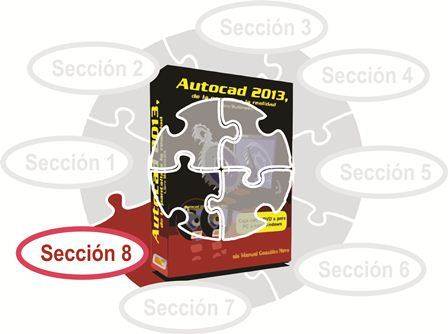3D Drawing with AutoCAD - Section 8

37.7 Subobject Editing
We understand subobjects of solids to their faces, edges and vertices. These elements can be selected and edited separately, although the effects of this action affect the whole solid. To select a subobject we basically have two methods. One of them is to press the CTRL key while we hover the mouse over the solid and click when the subobject is highlighted. The second alternative is to activate the sub-object filter on the Solid tab in the Select section.
Once the subobject is selected, we can apply the same manipulation methods we use for solids as a whole. That is, we can move, rotate or modify the scale of faces, edges and vertices, either through the corresponding editing commands, or using the 3D Gizmos. Obviously, we can also take and drag your grips, which are combined with the CTRL key to switch between their various options. In all cases, Autocad only modifies the solid to where it is possible to maintain your topology. For example, it does not allow a solid to overlap itself. And while, while modifying a subobject, you may see some strange shape, it will not be maintained when the command ends.
As you can see, there is a lot of freedom to change the shape of a solid with these procedures. Although it may also be found still insufficient to, for example, derive from a primitive a more complex form. However, we still lack the techniques that are derived from the transformation of a solid into a mesh or surface object and the editing tools that each of these types derive.
37.7.1 Stamped
Stamping is a process with which we can engrave an 2D object on the face of a solid 3D, so we can add geometry to a solid. That is, subobjects. Edges, vertices and even faces (when the object to be stamped is a closed area). For this, the 2D object must be coplanar to the face of the solid and must overlap. In other words simpler, the object to be stamped must be drawn on the face of the solid where it is going to be engraved.
However, editing sub-objects added to a solid has some restrictions, because in some cases, depending on the specific geometry of the solid, it may not be possible to move or lengthen edges or rotate faces, for example. If a solid has sub-objects stamped on more than one adjacent face, this will greatly limit what we can do with them.
Anyway, let's see how to stamp geometry in solids and then how it can be edited.
37.8 Edition of composite solids
We have already mentioned that a solid compound results from the combination of two or more solids through commands such as union, difference or intersection. If before performing these merge operations we activate the Solid History, then Autocad maintains a record of the original shapes, which can be selected and even edited through Gizmos and grips if we press the CTRL key when we hover over them.
The command to activate the Solid History is in the Primitive section and must be activated before the execution of any changes to the solid.
The history of a solid compound disappears if its property is set to No, or if we click the Solid History button in the Primitives section to disable it, so that we can no longer see or edit its original forms. If we reactivate the history, then the record is restarted and that compound solid could be, in turn, the original form of an even more complex composite solid.

